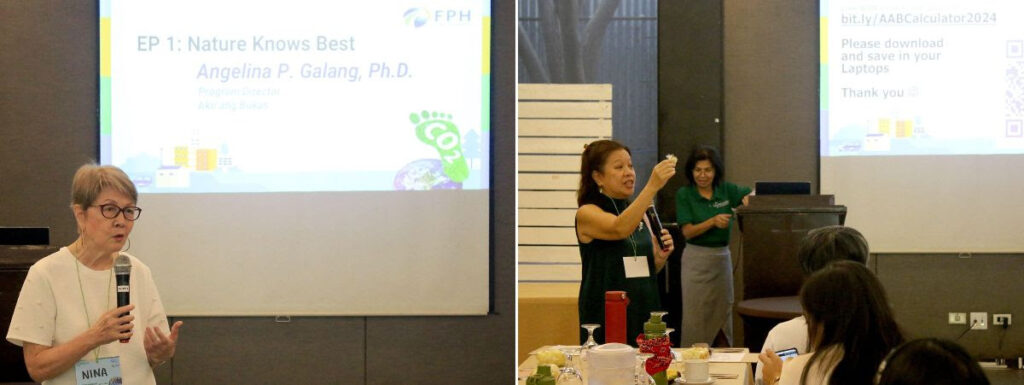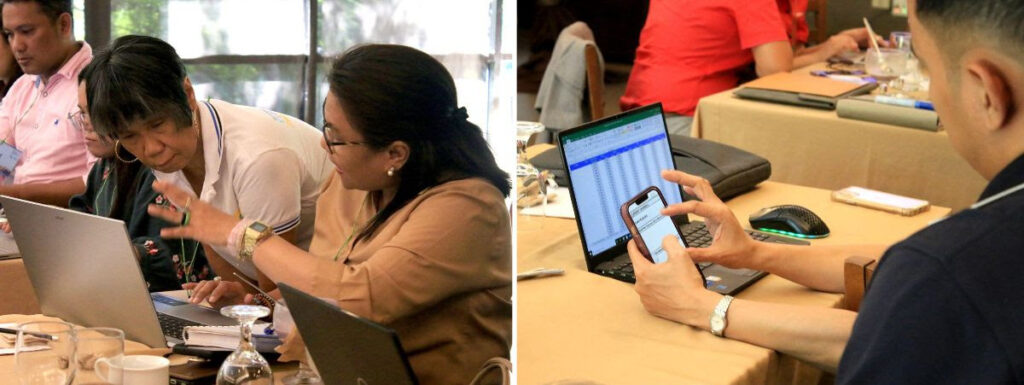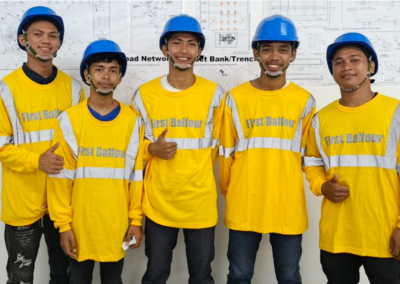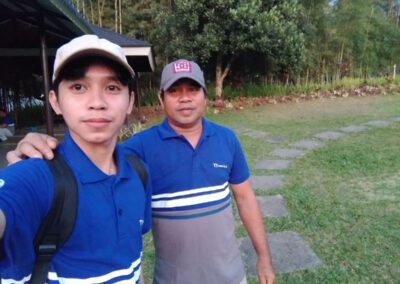In partnership with the Ako ang Bukas (AAB) Movement, First Balfour, through its Procurement and Materials Management Department, recently held a deep dive training course on greenhouse gas (GHG) accounting for its current suppliers. Aside from calculating GHG emissions, resource speakers also helped the suppliers understand their role in greening the supply chain. There were 19 companies present during the training ranging from cement suppliers, power system providers, steel manufacturers, tools and equipment suppliers, formworks vendors, and logistics companies among many others.

Attending the training were representatives from Trevi Foundations, Fuji Electric Sales, JPM Translift Corporation, Bauer Foundation, Engel Anlagen Technik, Hitachi Energy, Capitol Steel Corporation, Jascon Construction Supply, Hilti, Phelps Dodge, Ground Specialist, Inc., Altrad RMD Kwikform, Meva, Active Geo Anchor, Al-Bayt Civil Engineering Construction, Davies Paints, Holcim, KUS Architectural Components
Launched in 2021, AAB is a Philippine multi-sectoral environmental movement convened by the Green Convergence coalition, an NGO whose aim is to help the country achieve net-zero carbon emissions by 2050. Among AAB’s initiatives include conducting training sessions on the use of GHG calculators tailor-made for the different sectors of society, in this case for members of the First Balfour supply chain.

Starting the session were Green Convergence Convenor Dr. Angelina Galang (left in below photo), Executive Director Ma. Teresa Oliva (right in below photo), and Project Leader Milagros Serrana who first discussed the seven environmental principles namely Balance of Nature, Diversity and Stability, Interdependence, Change, Materials Cycles, Finiteness of Resources, and Stewardship. These principles were laid down to promote a sense of urgency in addressing the climate crisis by determining its causes, effects, and mitigation strategies—ultimately inspiring those in attendance to take action and become part of the solution.

While the construction industry has been pivotal to the advancement of nations for centuries, its growth has considerably heightened its environmental impact. The built environment is responsible for 39% of global annual carbon emissions. This figure comprises both operational carbon, the ongoing carbon emissions from its day-to-day use, and embodied carbon—all the emissions from producing materials, from the energy used to extract and transport raw materials as well as emissions from manufacturing processes.
The speakers highlighted the importance for suppliers to understand and acknowledge that there is a finite supply of resources. Therefore, companies should prioritize procuring materials that are eco-friendly, renewable, and locally-sourced to mitigate further damage to the environment. Additionally, implementing strategies and practices to reduce, reuse, and recycle construction wastes can help in this effort. A presentation on Climate Change 101 through First Philippine Holdings Chief Sustainability Officer Ms. Agnes C. de Jesus provided valuable insights into sustainable practices and the critical role of the construction industry in combating climate change.
To help the suppliers in further evaluating the impact of their operations, the need to quantify their carbon emissions was highlighted. According to the World Economic Forum, “any route to net-zero requires clear thinking and thorough accounting, beginning with accurate measurements of all carbon sources in order to ultimately reduce, reuse and recycle wherever possible.” The AAB Calculator, evaluated by the Philippine Climate Change Commission, will allow the vendors to calculate how much GHG they produce therefore giving them the data to determine strategies for carbon reduction.

AAB Project Leader Mila Serrana (in white) discussed the AAB Calculator to vendors
First Balfour Head of Procurement Edwin Alberto P. Constantino, in his message to the suppliers present in the event, also shared, “Humans have the biggest effect on climate change and the environment. It is high time that we start taking better care of the world by becoming more responsible in the use of its resources and by avoiding activities that contribute to its degradation. This is a task that cannot simply be left in the hands of a single entity, First Balfour, the Lopez Group, or even the government. Rather, it will take all of our combined efforts to stop climate change and take better care of mother earth so we can preserve it for future generations. And the time to start is NOW.”
The path towards carbon neutrality will definitely take decades before we can see change but heading towards a greener supply chain is a step in the right direction. The construction industry is at a critical juncture, with an urgent need to address its significant contribution to global emissions. First Balfour, true to its mission of forging collaborative pathways for a decarbonized and regenerative future, will continue to influence industry players and take the lead in taking concrete steps toward a cleaner future.



